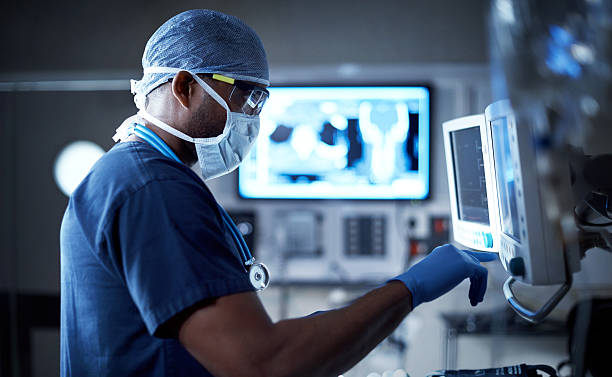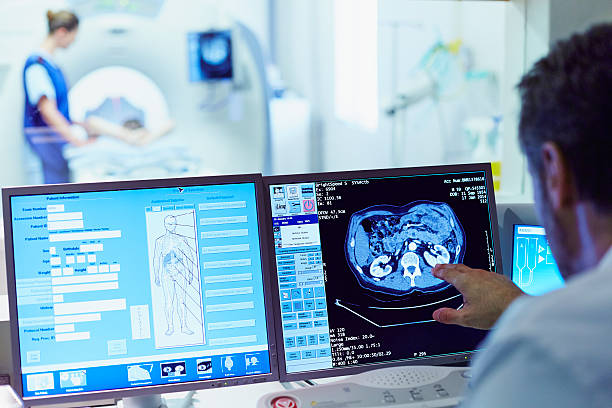Medical diagnostic equipment is used to detect and diagnose medical conditions. The most common type of medical diagnostic equipment is a stethoscope, which is used to listen to internal body sounds. Other examples include blood pressure monitors, pulse oximeters, electrocardiographs (ECGs), electroencephalography (EEGs), ultrasonography (US), and X-ray machines.
Diagnostic equipment is a form of medical equipment used to diagnose health conditions. Diagnostic devices can be simple, such as an otoscope for examining ears, or complicated, such as magnetic resonance imaging (MRI) machines. Diagnostic devices are used to detect and monitor diseases and assess the severity of injury or illness. Diagnostic equipment includes a wide range of medical instruments used in clinical care.
However, in this article, we will discuss medical diagnostic equipment, its different types and subcategories, and the importance of medical diagnostic equipment and its uses.
What is Medical Diagnostic equipment?
Medical diagnostic equipment is used for the medical diagnosis of the patients. Medical diagnosis is a method of determining the cause of an illness or injury. It is often based on signs and symptoms and may include examination of organisms and body fluids. However, to completely grasp medical diagnostic equipment, we must first comprehend medical diagnosis in its proper sense.
The process of recognizing which disease or condition causes a person’s symptoms and indicators is known as medical diagnosis. The term “diagnostic” is most commonly used, with the medical context implied. The information needed for diagnosis is usually gathered from the patient’s medical history and physical examination. One or more diagnostic procedures, such as medical testing, are frequently performed during the process.
Therefore, Medical diagnostic equipment is those devices that enable or aid diagnostic procedures. On the other hand, a diagnostic procedure can be performed by a physician, physiotherapist, dentist, podiatrist, optometrist, nurse practitioner, healthcare scientist, or physician assistant, among others.
Hence, diagnostic medical equipment and supplies assist clinicians in assessing and observing numerous elements of a patient’s health to make a diagnosis. The clinician can then recommend a suitable treatment plan once a diagnosis has been made.
Types of medical diagnostic equipment with examples
As medical technology advances, more medical equipment will likely emerge. There are several types of medical diagnostic equipment, some of which are divided into the subcategories listed below.
1. Clinical/Laboratory diagnostic equipment
Clinical diagnostics equipment is used to detect signs of health and disease. This medical technology is used to make diagnoses based on laboratory reports or test results rather than the patient’s personal examination. For example, a proper diagnosis of infectious diseases usually necessitates a review of signs and symptoms, laboratory test results, and pathogen characteristics.
Some disease state predictors are metabolic markers (blood chemistry) such as glucose, urea, and potassium. Thyroid illness markers, liver function tests, heart disease, heart attack indicators, etc. Examples of some Clinical diagnostic equipment;
- Thermometer
- Electrocardiographs
- Stethoscopes
- Sphygmomanometers
- Chromatography
- Clinical Centrifuge
- Cell Counter
- Clinical Laboratory Incubator
- Hematology analyzers.
2. Radiology diagnostic equipment
The results of medical imaging studies are used to make a diagnosis. This device allows medical professionals to view your body’s components. The following are the most prevalent types of diagnostic radiological exams:
- CT angiography is a type of computed tomography (CT) scan, often known as computerized axial tomography (CAT) scan.
- Upper GI fluoroscopy, as well as a barium enema
- Magnetic resonance imaging (MRI) and magnetic resonance angiography (MRIA) are two types of MRI (MRA)
- Mammography
- Nuclear medicine studies include bone scans, thyroid scans, and thallium cardiac stress tests.
Examples of some Radiology diagnostic equipment
- X-Ray Machines
- Magnetic resonance imaging
- Ultrasound Scanners
- Mammography
- Bone scan
- Echocardiography
- Functional magnetic resonance imaging
- Magnetic resonance angiography
- Tomography
3. Tissue diagnostic equipment
The macroscopic, microscopic, and molecular analysis of tissues such as biopsies or complete organs are used to make a diagnosis with this diagnostic equipment. A pathologist, for example, uses tissue examination to provide a conclusive cancer diagnosis. Examples of some Tissue diagnostic equipment
- Antibodies Kits Reagents Probes Instruments
- Slide Staining System Scanner
- Tissue Processing system
- ThinPrep Genesis Processor, etc.
4. Self-diagnostic equipment
These are diagnostic tools for identifying medical issues in one’s own body. Simple illnesses like head lice and skin abrasions, as well as common ailments like menstrual pains, headaches, and the common cold, are more likely to be self-diagnosed. Self-diagnosis is a relatively regular occurrence. Examples of some Self-diagnostic medical equipment;
- Express HIV self-test kit
- Pregnancy self-test kit
- COVID-19 rapid self-test kit, etc.
Others include:
- Differential diagnostic equipment
- Prenatal diagnostic equipment
- Retrospective diagnostic equipment
Uses of medical diagnostic equipments
A diagnosis, in the sense of a diagnostic method, is an attempt to categorize an individual’s condition into separate and distinct categories that allow medical professionals to make treatment and prognosis decisions. As a result, a diagnostic opinion is frequently expressed in terms of sickness or other ailments.
Diagnostic equipment, on the other hand, isn’t always employed to solve medical problems. On the other hand, a diagnostic technique does not always entail clarification of the etiology of the diseases or conditions of interest, i.e., what caused the disease or condition.
This information can improve treatment, define the prognosis, or prevent the disease or condition from recurring in the future. The first step in medical diagnosis, aided by diagnostic equipment, is identifying a medical problem. Indications include:
- Detection of any aberration from what is considered normal, such as that which can be characterized in terms of anatomy, for example. Knowing what is normal and comparing the patient’s current situation to those norms can help determine the patient’s specific deviation from homeostasis and the degree of deviation, which can help quantify the indication for additional diagnostic processing.
- Complementing the previously provided information with further data collection may include medical history questions (perhaps from other persons close to the patient), physical examination, and other diagnostic procedures.
- The enhanced medical equipment created by skilled specialists ensures a faultless display and greater precision, ensuring the modern healthcare department’s profitability and efficiency.
- These devices allow human services professionals to make more precise and thorough determinations and provide better treatment to their patients.
Conclusion
Medical diagnostic equipment is used to determine the cause of a patient’s illness or injury. It provides physicians with the data they need to make a diagnosis and choose treatment options. Patients’ medical diagnoses are made with medical diagnostic equipment. A way of determining the source of a sickness or injury is a medical diagnosis. It is frequently based on indications and symptoms and may include organism and body fluid examinations.



